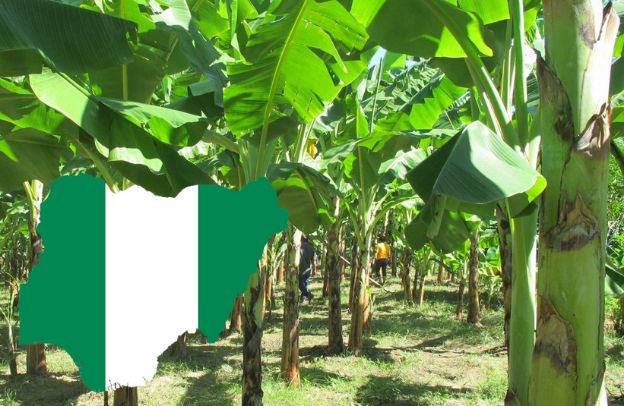Harvesting and Storing Cassava: A Guide for Nigerian Farmers and Diaspora Investors

Imagine transforming Nigeria’s vast agricultural landscapes into thriving hubs of innovation and prosperity. As an entrepreneur within the African diaspora, you possess the unique opportunity to spearhead this transformation. By investing in Nigeria’s cassava industry, you can not only build a profitable enterprise but also address pressing issues like food insecurity and unemployment.
Learn How to Leverage Your Story through our Story To Asset Transformation (S.A.T) Framework.
This comprehensive guide delves into the essential practices of harvesting, storing, and marketing cassava, providing you with the knowledge to make a significant impact.
The Strategic Importance of Cassava in Nigeria
As of 2022, Nigeria remained the largest producer of fresh cassava in Africa and the world, with production surpassing 60.8 million metric tons. It was followed by the Democratic Republic of the Congo (48.8 million metric tons) and Ghana (25.6 million metric tons) (Statista). Cassava is not just a staple food but a strategic crop driving multiple industries, including food processing, textiles, and biofuels.
Despite its immense economic and food security potential, Nigeria’s cassava sector faces significant post-harvest losses, estimated at 30–40% annually. Challenges in harvesting, storage, and processing reduce profitability and limit the industry’s growth.
Addressing these issues through improved infrastructure, modern preservation techniques, and value addition is critical to maximizing cassava’s economic impact, strengthening food security, and driving sustainable agribusiness development.
Optimizing Cassava Harvest: Timing and Techniques
Optimizing cassava harvest involves timing and techniques that ensure maximum yield and quality. Harvesting too early or late can reduce both quantity and quality. By applying the right methods at the optimal time, you can secure a more productive and profitable harvest. Here are some recommendations:
Identifying the Optimal Harvest Period
Cassava typically reaches maturity between 8 to 18 months after planting, depending on the variety and environmental conditions. Signs of readiness include yellowing leaves and a decrease in new leaf formation. Harvesting at the right time ensures maximum starch content and tuber quality.
Implementing Effective Harvesting Methods
For small to medium-scale operations, manual harvesting using sharp machetes is common. However, investing in mechanical harvesters can enhance efficiency and reduce labor costs as your enterprise scales. Careful handling during harvest is essential to prevent bruising, which can lead to spoilage.
Enhancing Post-Harvest Storage to Minimize Losses
Post-harvest losses pose a significant threat to profitability. Implementing proper storage techniques is vital.
Pre-Harvest Preparations
Selecting high-quality, disease-resistant cassava varieties and ensuring optimal soil conditions set the foundation for successful storage. Regular field inspections help in the early detection and management of potential issues.
Post-Harvest Handling Practices
Immediately after harvest, clean the tubers to remove soil and debris. Sorting and grading based on size and quality facilitate targeted marketing and processing. Minimizing physical damage during handling is crucial to extend shelf life.
Adopting Advanced Storage Solutions
Traditional methods, such as storing tubers in pits lined with organic materials, are cost-effective but may not suffice for large-scale operations. Modern techniques, including refrigeration and controlled atmosphere storage, although requiring higher investment, significantly reduce spoilage and extend the marketability of cassava products.
See also: Cassava Farming in Nigeria – A Gateway to Agribusiness Success for the African Diaspora
Implementing Robust Pest and Disease Management
Protecting your cassava crop from pests and diseases is essential for maintaining yield and quality.
Common Threats
According to the British Society for Plant Pathology, cassava is a crucial and highly adaptable tropical root crop, serving as a dietary staple for approximately 800 million people worldwide. In Africa alone, an estimated 500 million people consume cassava daily, with half relying on it as their primary source of calories.
Cassava’s resilience makes it a lifeline for food security—it is drought-tolerant, requires minimal inputs, and thrives in marginal lands where other crops struggle. One of its most remarkable traits is its ability to remain in the ground for up to three years, providing a natural food reserve during periods of drought or social unrest.
Beyond being a staple food, cassava plays a vital role in agribusiness. It serves as a raw material for small-scale enterprises and large-scale industries, contributing to food processing, pharmaceuticals, and biofuels.
However, despite its resilience, cassava is highly susceptible to pests and diseases, with cassava mosaic disease (CMD) and cassava brown streak disease (CBSD) posing the most severe threats.
Both are caused by distinct groups of viruses, jeopardizing cassava production and threatening food security and economic stability in cassava-dependent regions.
Preventative Measures
Employing cultural practices like crop rotation and intercropping can reduce pest incidence. Utilizing disease-free planting materials and maintaining field hygiene are proactive steps in disease prevention.
Strategic Use of Pesticides
While chemical controls can be effective, they should be used judiciously to prevent environmental harm and resistance development. Integrating biological control methods can offer sustainable alternatives.
Strategizing Marketing and Sales for Maximum Impact
Strategizing marketing and sales for your cassava enterprise requires a clear, targeted approach to reach the right customers effectively. Understanding customer needs, and differentiating your product, can help you stand out in a competitive landscape. A well-crafted strategy not only boosts sales but also builds long-term brand loyalty and profitability. Now, let’s expand more on them.
- Identifying and Understanding Target Markets: Assessing local and international demand for cassava and its derivatives enables you to tailor your products accordingly. Understanding market trends and consumer preferences guides product development and positioning.
- Developing a Comprehensive Marketing Plan: Establishing a brand that resonates with quality and reliability builds customer loyalty. Leveraging digital platforms and social media expands your reach and engages a broader audience.
- Building Strategic Partnerships: Collaborating with local processors, distributors, and retailers creates a robust supply chain. Participating in agricultural cooperatives can enhance bargaining power and open new market avenues.
The Role of the African Diaspora in Nigeria’s Agricultural Transformation
The African diaspora plays a crucial role in transforming Nigeria’s agricultural sector, which is vital for the country’s economic development. According to a study by Moukpè Gniniguè Nadege Essossolim Awade in the African Journal of Economic Review, the diaspora is instrumental in driving structural transformation in West Africa, including Nigeria.
Structural transformation, which involves shifting labor from agriculture to other sectors, is critical for sustainable development but has been slow in the region. The study highlights that the diaspora, through both emigration and the outflow of highly educated individuals, contributes to this shift by attracting labor back into agriculture and supporting the growth of modern agricultural techniques.
By investing in advanced methods, the diaspora can enhance agricultural productivity and accelerate the desired structural transformation, supporting the broader goals of the African Union. Now, here are some of the points:
Bridging Resource Gaps
Your access to international markets, capital, and advanced technologies positions you to introduce innovations that can modernize cassava production and processing.
Driving Economic Growth
Diaspora investments go beyond individual financial contributions; they fuel economic growth, create jobs, and improve livelihoods across Africa. By channeling funds into businesses, infrastructure, and agribusiness ventures, members of the African diaspora play a crucial role in stimulating local economies and fostering long-term development.
According to the United Nations, remittances serve as a lifeline for over 200 million Africans, providing essential financial support while strengthening the solidarity and resilience of communities both at home and abroad. In 2023, Africa received an estimated $100 billion in remittances—nearly 6% of the continent’s GDP—a figure that outpaced Official Development Assistance (ODA) at $42 billion and Foreign Direct Investment (FDI) at $48 billion. These funds not only support families but also serve as a key driver of economic activity, particularly in sectors like agriculture, education, and healthcare.
Recognizing the significance of remittances, the International Day of Family Remittances (IDFR) is observed every June 16, spotlighting their role in reducing poverty and driving economic stability.
However, barriers such as high transaction costs and financial exclusion continue to limit their full potential. Addressing these challenges—through lower transfer fees, better financial infrastructure, and targeted investment opportunities—will ensure that diaspora contributions remain a powerful force for Africa’s economic transformation.
Enhancing Food Security
By improving cassava value chains, you contribute to making affordable and nutritious food available, and addressing hunger and malnutrition challenges.
See also: Cassava: A Sustainable Solution to Combat Food Insecurity in Nigeria
Seizing the Opportunity
The potential within Nigeria’s cassava industry is immense, but realizing it requires strategic action and investment.
- Invest in Capacity Building: Providing training for local farmers on best practices in cultivation, harvesting, and storage elevates the overall quality and yield of cassava production.
- Advocate for Supportive Policies: Engaging with policymakers to create an enabling environment for agribusiness, including access to financing and infrastructure development, is crucial for sustainable growth.
Leverage Technological Innovations
Incorporating technologies such as precision agriculture, mobile-based market information systems, and improved processing equipment can enhance efficiency and profitability.
Embarking on this journey offers more than just financial returns—it empowers communities, strengthens food security, and propels Nigeria’s agricultural sector into a new era of prosperity. Whether you’re an investor, entrepreneur, or advocate, your contribution can leave a lasting impact on the future of Nigerian agribusiness.
Learn How to Leverage Your Story through our Story To Asset Transformation (S.A.T) Framework.





